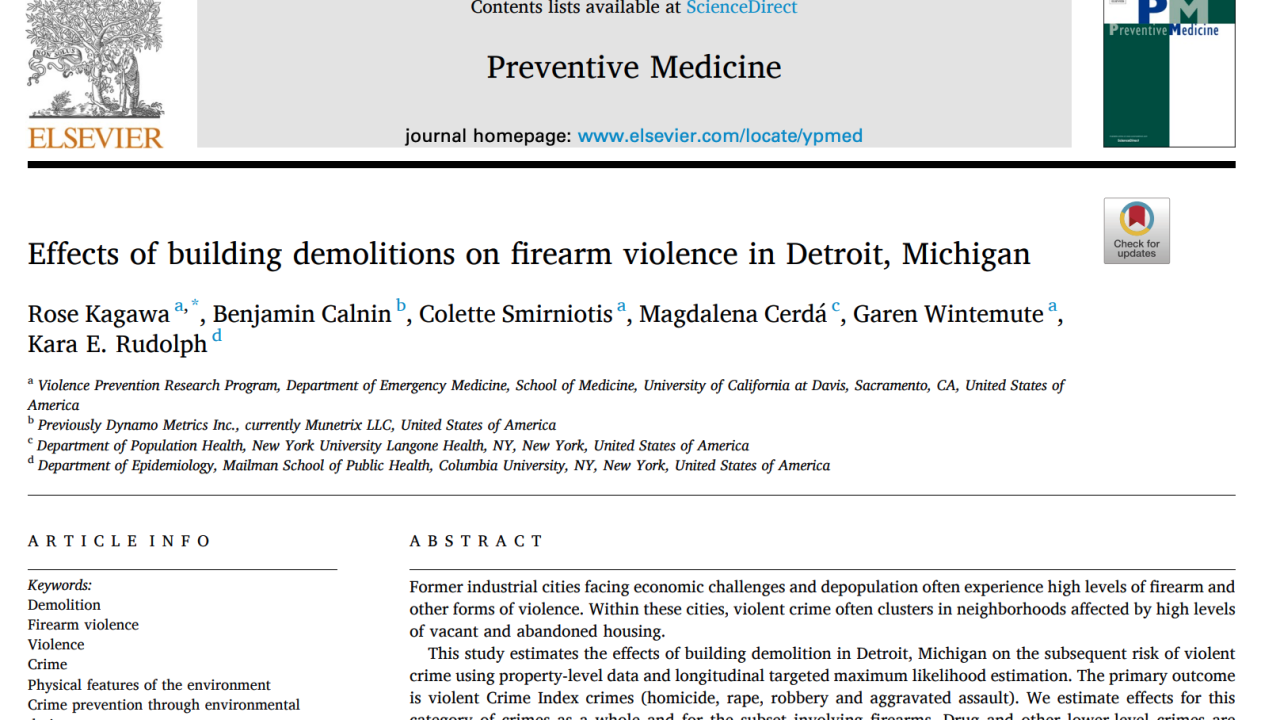
Effects of building demolitions on firearm violence in Detroit, Michigan
Quick Summary
- Our results suggest the demolition activities in Detroit in 2017 were not associated with the probability of subsequent violent or drug crimes in Census blocks or block groups.
Abstract
Former industrial cities facing economic challenges and depopulation often experience high levels of firearm and other forms of violence. Within these cities, violent crime often clusters in neighborhoods affected by high levels of vacant and abandoned housing.
This study estimates the effects of building demolition in Detroit, Michigan on the subsequent risk of violent crime using property-level data and longitudinal targeted maximum likelihood estimation. The primary outcome is violent Crime Index crimes (homicide, rape, robbery and aggravated assault). We estimate effects for this category of crimes as a whole and for the subset involving firearms. Drug and other lower-level crimes are included as secondary outcomes. We compare the risk of experiencing each crime type following building demolition in Census blocks and block groups to an estimate of the risk had there been no demolition in the 1–3 quarters prior in 2017.
There were >2600 total demolitions in about 1700 blocks in 2017 in Detroit. Nearly all demolished buildings were sourced from tax foreclosures. Estimates suggest the risk for all crime types tested would have been statistically indistinguishable from the observed crime risk had demolitions in the prior 1–3 quarters of 2017 not occurred.
Our results run counter to most previous research on this topic, which tends to show a protective effect of demolition on violent crime. Understanding why our results differ may provide important insights into the types of demolition programs with the greatest potential to reduce violent crime.
Media Resources
Read the study in Preventive Medicine
